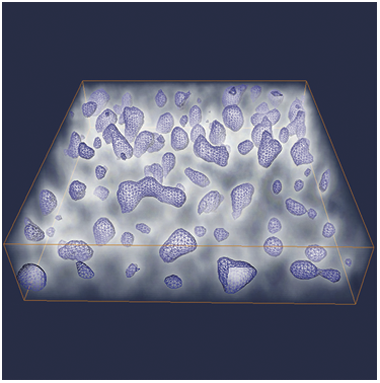Published online by Cambridge University Press: 09 April 2020

Modern nanomaterials contain complexity that spans all three dimensions—from multigate semiconductors to clean energy nanocatalysts to complex block copolymers. For nanoscale characterization, it has been a long-standing goal to observe and quantify the three-dimensional (3D) structure—not just surfaces, but the entire internal volume and the chemical arrangement. Electron tomography estimates the complete 3D structure of nanomaterials from a series of two-dimensional projections taken across many viewing angles. Since its first introduction in 1968, electron tomography has progressed substantially in resolution, dose, and chemical sensitivity. In particular, scanning transmission electron microscope tomography has greatly enhanced the study of 3D nanomaterials by providing quantifiable internal morphology and spectroscopic detection of elements. Combined with recent innovations in computational reconstruction algorithms and 3D visualization tools, scientists can interactively dissect volumetric representations and extract meaningful statistics of specimens. This article highlights the maturing field of electron tomography and the widening scientific applications that utilize 3D structural, chemical, and functional imaging at the nanometer and subnanometer length scales.